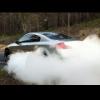Tuning Afrs
Announcements
-
Similar Content
-
Latest Posts
-
In which case I still think my approach would be just as easy. In fact, easier, because of all that guidance on the front side.
-
By Murray_Calavera · Posted
I would be very surprised if you could tell the difference between 8kg and 12kg wheels in a blind A B test. What you will be able to notice is going to wider wheels (+wider tyres). If you don't have to abide by any rules, I'd fit the widest wheels you can get under the guards. -
To this day I find the stock R32 wheel size hilarious.
-
I mean the stuff on the side. It really depends on what the JSAI bar has - I'll make the assumption it has the strakes and that the end is just a flat piece. Otherwise....
-
Are you talking about the hole at the back end that is just a hole (albeit one with some shape to it, as you perhaps say), or are you talking about the big strakes that run down the sides of the recess?
-







Recommended Posts
Create an account or sign in to comment
You need to be a member in order to leave a comment
Create an account
Sign up for a new account in our community. It's easy!
Register a new accountSign in
Already have an account? Sign in here.
Sign In Now